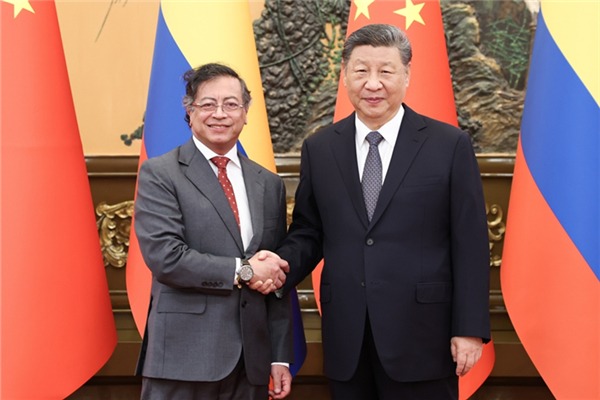New transportation route fosters trade connectivity between China and Vietnam

A convoy of 18 freight trucks and two buses departed from China on Wednesday for Hanoi, Vietnam, marking a key milestone in regional trade connectivity. It will be the first time for Chinese freight vehicles to enter Vietnam's hinterland under the Cross-Border Transport Facilitation Agreement, an initiative of the Greater Mekong Subregion cooperation program.
The vehicles, loaded with electronic components, fresh vegetables and general merchandise, set off from Kunming in Yunnan province and Nanning in the Guangxi Zhuang autonomous region. They were expected to arrive in the Vietnamese capital on Thursday.
The launch signaled a breakthrough in cross-border logistics. Previously, Chinese freight trucks had to stop at the border in Lao Cai, where goods were unloaded and then reloaded onto Vietnamese vehicles before continuing inland. This process not only delayed deliveries but also increased logistics costs.
With the cross-border transportation agreement permit in place, trucks can now travel directly from China into major Vietnamese cities such as Hanoi and Ho Chi Minh City without transshipment. The same policy allows Vietnamese trucks to operate in Chinese territory without cargo transfers.
Important milestone
"The launch of international road transport between China and Vietnam is an important milestone in deepening practical cooperation between the two countries, and another achievement of the Belt and Road Initiative," said Liu Peng, director of the Global Sustainable Transport Innovation and Knowledge Center under China's Ministry of Transport.
Wang Xiuchun, deputy director of the Transport Services Department at the ministry, said, "It reflects China's strong support for connectivity among Greater Mekong Subregion countries and offers an effective path for cross-border economic cooperation in the Lancang-Mekong region, promoting integration, prosperity, sustainability and inclusiveness."
Vietnamese officials also welcomed the development. "This launch is not just a technical activity — it is a vivid symbol of practical and effective cooperation between our two nations," said Do Quoc Phong, deputy head of the Transport Management Department at Vietnam's Road Administration under the Ministry of Construction.
According to the Vietnamese authorities, the newly opened corridors are major overland trade routes carrying high volumes of import-export goods between the two countries.
The transportation agreement facilitates cross-border movement of goods and people among six member countries — China, Vietnam, Laos, Cambodia, Thailand and Myanmar.
The direct transportation route has already brought multiple benefits to logistics companies.
"This permit works like a passport for a vehicle. In China, we use the domestic vehicle license; abroad, we use the permit — just like a passport. It allows us to travel across Greater Mekong Subregion countries along approved international routes," said Jin Jia, director of the International Business Department at Yunnan Maosheng International Logistics.
Pu Xiaoqiang, general manager of Yunnan Youjie International Logistics, said: "With the permit, the travel time is reduced by half. It used to take two days to reach Hanoi from Kunming due to cargo transfers at the border. Now it only takes one. For perishable goods like flowers, vegetables and fruits, speed of delivery is critical — especially in Vietnam's hot climate."
Pu added, "Shorter transit times mean less spoilage and happier customers."
Digital platforms are playing an increasing role in optimizing the new transportation corridors.
"Our company helps small and micro logistics firms by breaking technical barriers and lowering costs," said Gong Rui, chairman of Yunnan Yunjie Technology. "Through our platform, we match cargo owners with logistics providers, and we've already helped clients arrange backhaul shipments from Vietnam, reducing empty return trips."
Gong added that the platform also supports Vietnamese transport companies qualified under the agreement. "Logistics is essentially borderless. When managed effectively under proper supervision, it reduces costs and delivers real benefits to businesses and people on both sides."
China and Vietnam are major trading partners. According to Chinese customs data, bilateral trade in 2024 surpassed $260 billion, with China maintaining its position as Vietnam's largest trade partner for 20 consecutive years.
The launch of road transport under the cross-border agreement is expected to further enhance trade efficiency, reduce cross-border logistics costs, and boost economic integration across the region, said Liu, from China's Ministry of Transport.
- New transportation route fosters trade connectivity between China and Vietnam
- China Internet Civilization Conference to be held in Anhui
- Peach pits becoming eco-friendly carbon alternative
- Newborn deer in Ningxia wows visitors
- Folk song journey event attracts tourists to library
- Anti-corruption watchdog investigates death of Henan official





































